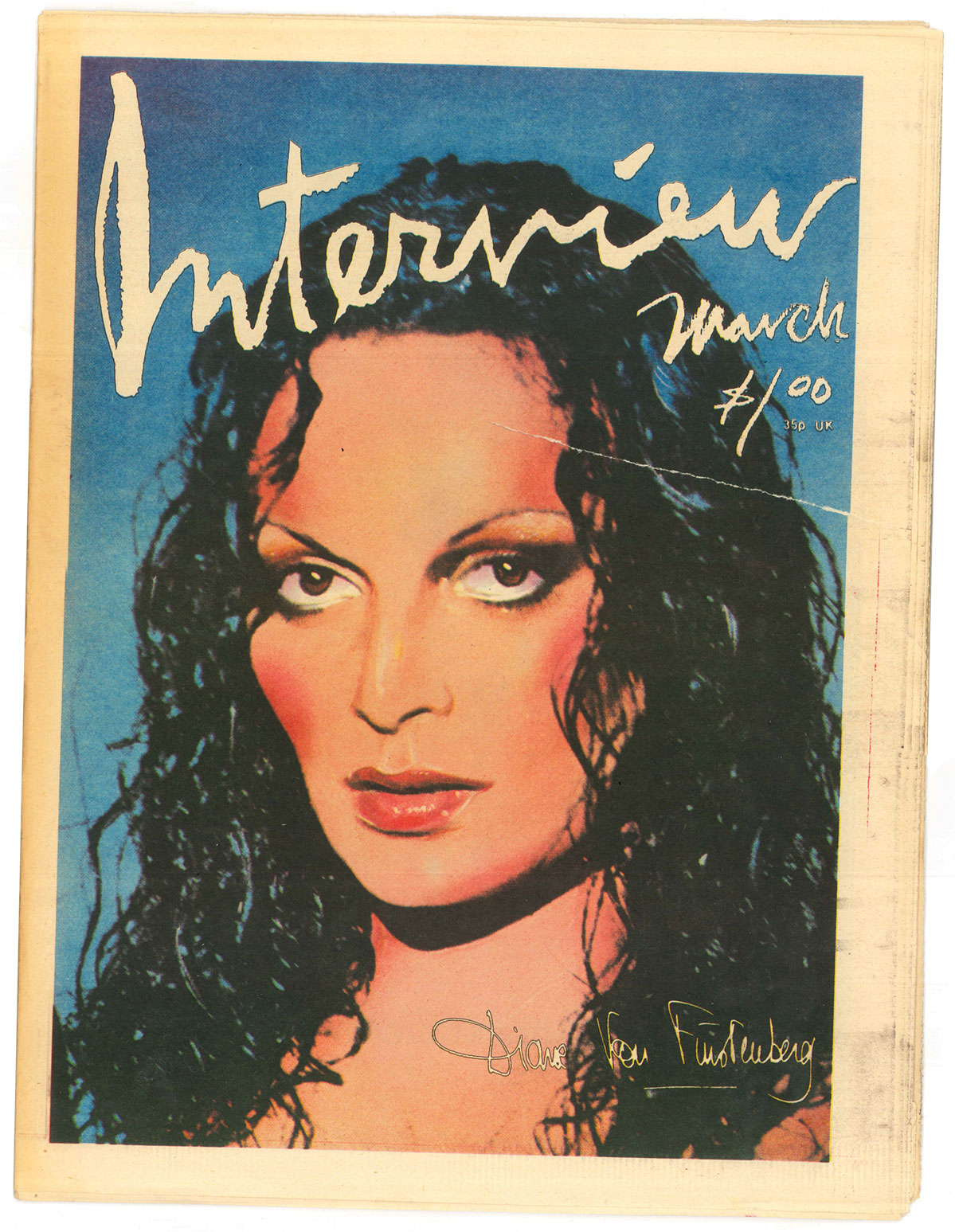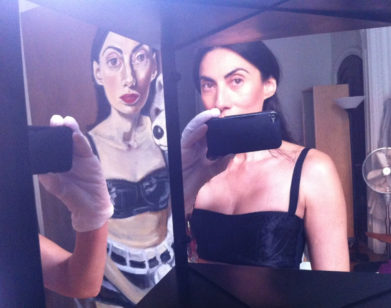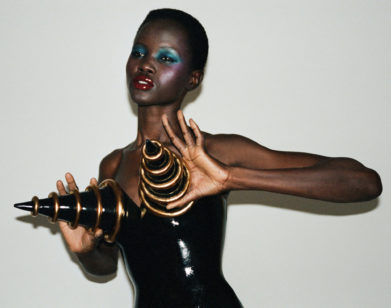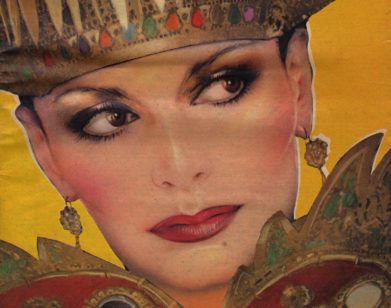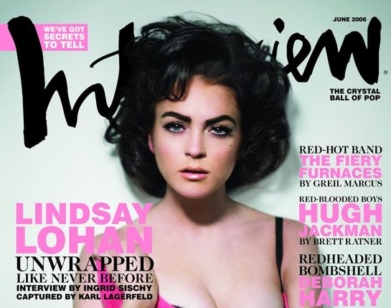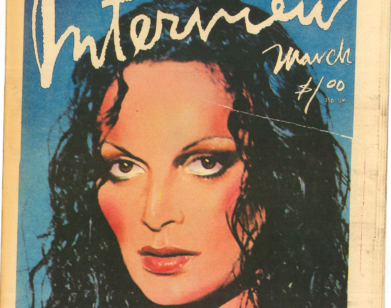VINTAGE
“I Am the OG”: Diane von Furstenberg Opens Up Her Archive
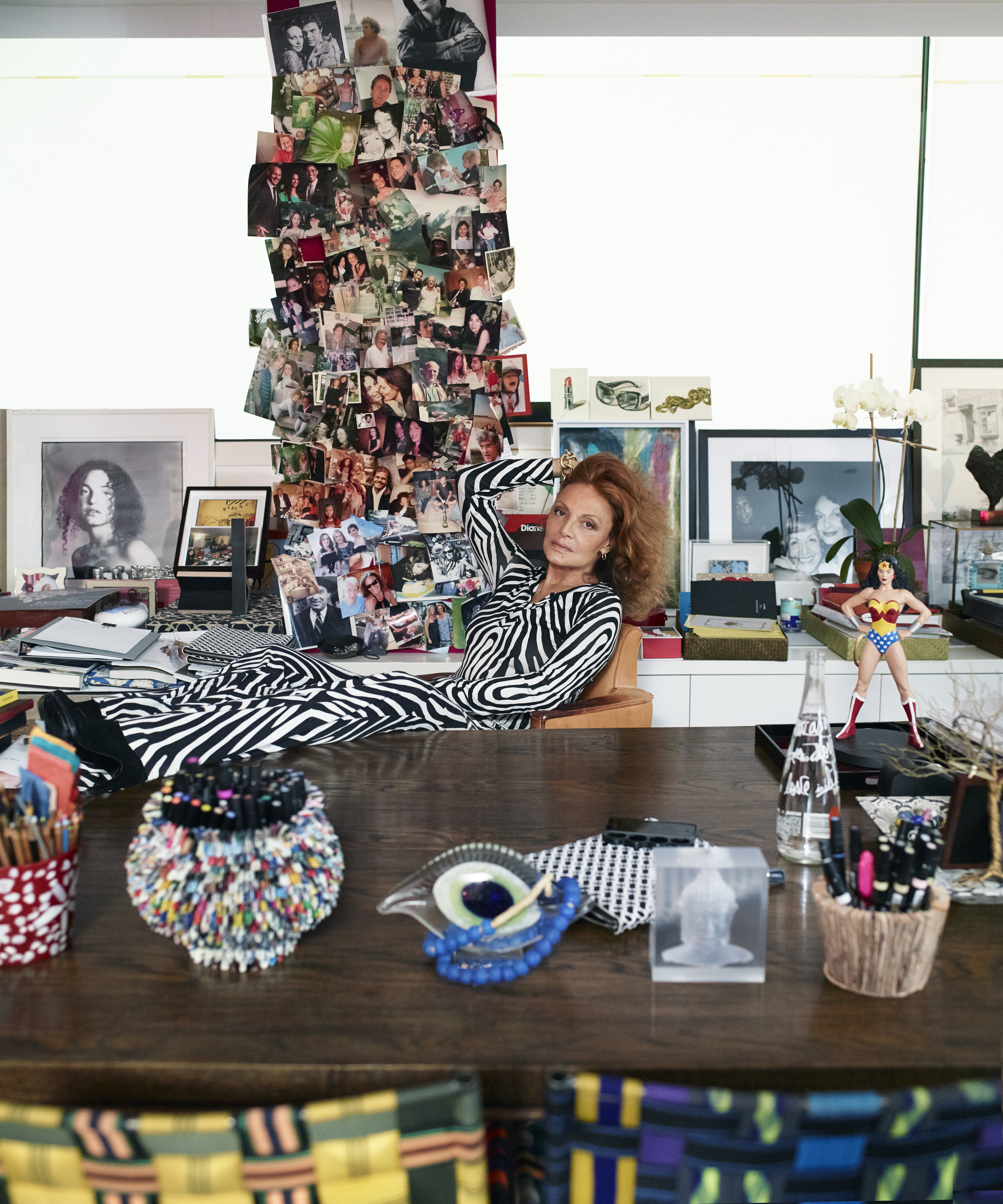
The first time I ever visited New York my mom insisted that we stop at the DVF store. It was kismet: the flagship she spotted beneath the Highline, and her chance to finally buy a wrap dress. I remember my mother practically squealing when she tried it on—the black and white chainlink pattern hugging her curves. She’d always wanted one. She was ready to splurge. But this story isn’t only ours. Since the 1970s, Diane von Furstenberg has been selling thousands of women the promise of sexy silhouettes and souped up egos. The wrap dress, as DVF told me over the phone last weekend, is a longstanding symbol of freedom, a means of sharing her confidence with women around the world. So when someone suggested she sell a selection of her archival pieces online and at the company’s flagship store, it was a no-brainer. “I am vintage,” she told me. “What do you want me to say?”
———
DIANE VON FURSTENBERG: Hi. How are you?
TAYLORE SCARABELLI: I’m good. Thank you for taking the time to chat with me. I’d love to talk to you about this new vintage collection.
FURSTENBERG: I mean, everyone’s getting very excited about vintage, but my dresses have always been hot. I don’t know whether it’s because I started in the ’70s and somehow that is always timeless, but now there’s all this excitement and they’re opening a little vintage store in our place. For me, I am vintage, so what do you want me to say?
SCARABELLI: [Laughs] I think it’s interesting because you already experienced this big revival in the late ’90s when you relaunched the wrap dress, it seems like it’s time for it to come around again.
FURSTENBERG: People always say, “How do you cater to young people,” or stupid things like that. I’m on my third experience of the very young kids discovering what I’ve done in their grandmother’s closet. And it is true that the ’70s were a great decade to be young. The more I look back, the more I realize it. People are really obsessed with that ease and freedom.
SCARABELLI: And the wrap dress was always about liberation, it was sexy and fit a lot of different body types, but it was also comfortable at a time when women were used to wearing more tailored things.
FURSTENBERG: And very hard things. I mean, at the time, you could put a dress on the floor and it would stand up.
SCARABELLI: Right.
FURSTENBERG: But my first job was as an assistant to a photographer’s agent. We had all the best photographers, like Helmut Newton and Bob Richardson and David Bailey. And then I met this Italian man and he said to me, “If you’re interested in fashion, you should see where we make it.” He was printing mostly scarves at the time, and he invited me to come with him to Como. I learned everything about printing, how you buy an illustration, how you put it in a pattern, how you make a color palette.
SCARABELLI: Mm-hmm.
FURSTENBERG: Maybe I give you too many details, but next door, there was an empty factory that used to make stockings. Of course, because pantyhose was born, nobody was buying stockings anymore. And so he bought that place and there were all these tubular knitting machines. And so he said, “What could we do in these machines?” Anyway, to make a ling story short, he invented this incredible jersey fabric.
SCARABELLI: Yes.
FURSTENBERG. And then he said, “We can print on the jersey and we can make little T-shirts and polo shirts.” And then I said, “Yes, and maybe a polo dress,” and blah, blah, blah. I happened to be there at that time.
SCARABELLI: Right.
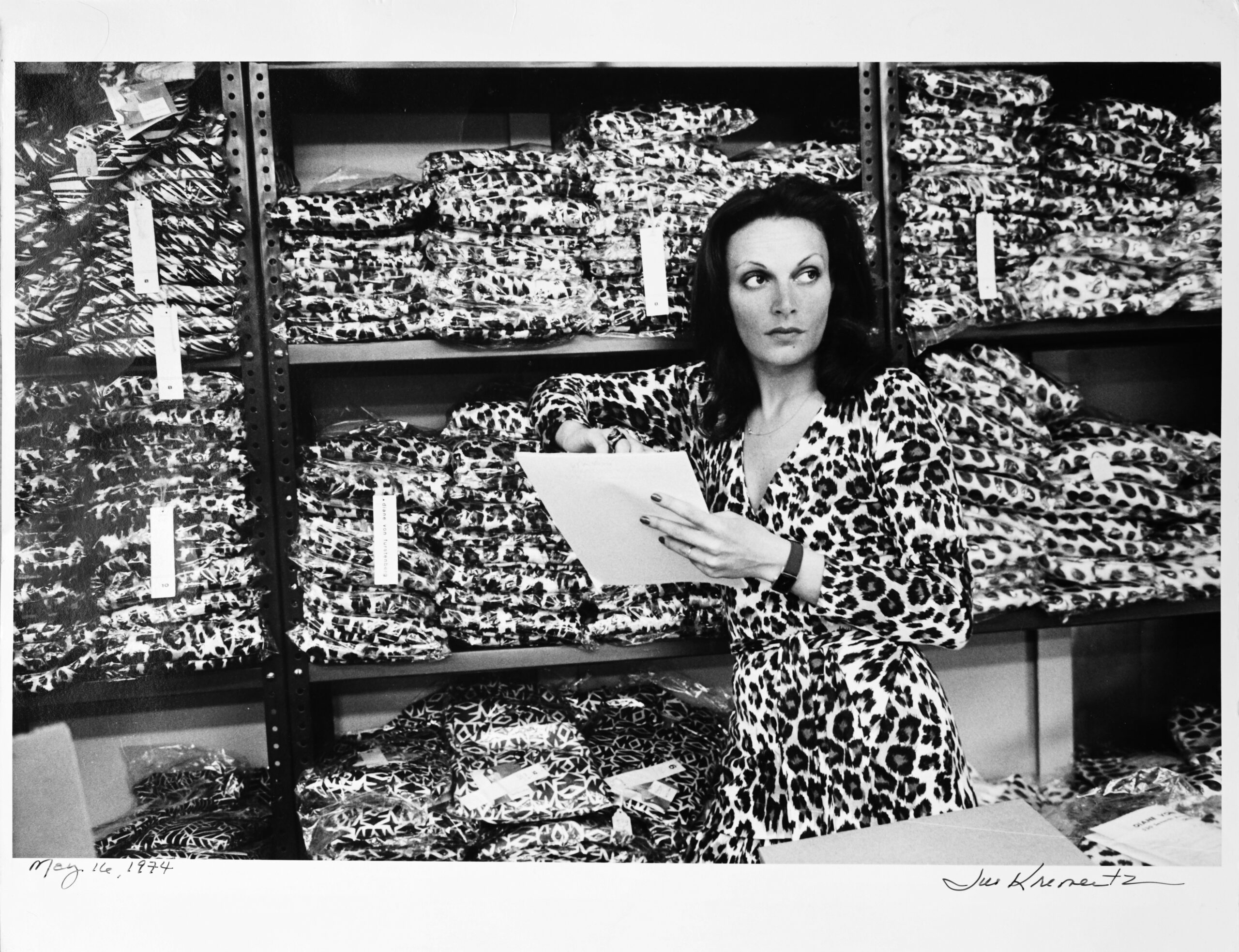
FURSTENBERG: So then my mother, for my birthday, I’m born on New Year’s Eve, gives me a ticket to go to New York and visit my boyfriend, Egon Furstenberg. And so I came to New York and I fell in love. You can imagine New York was dirty, and it was dangerous, but it was cheap. And because it was cheap, you had all the artists, it was fascinating. Egon was a prince, and so we were invited everywhere. And there were these fascinating designers, Giorgio di Sant’Angelo and Stephen Burrows. They invited me to their showroom and gave me clothes. It was a completely different thing than anything that was happening in Europe. So I stayed a month in America, and then I had to go back. And all I could think about is how do I go back to New York? So I went back to the factory, and I said, “This is my opportunity. I’m going to make little dresses that I will sell in America.” And that’s how it started.
SCARABELLI: I mean, it’s an incredible story, and it feels like such a modern tale in terms of how you met all the right people. You were in the right place at the right time, but also you were so determined and hard-working and willing put yourself—
FURSTENBERG: Wait, wait, wait. I forgot to tell you. In the meantime, my boyfriend comes and visits me, and I get pregnant. When I found out I was pregnant and I was getting married I went to the owner of the factory and I said, “Listen, you got to help me here. I’m moving to America. I really want to be independent, and so you have to support me.” And he did.
SCARABELLI: And even though you were marrying a prince, that independence was so important to you, which I find really inspiring.
FURSTENBERG: Exactly. And then what happened is for the first two years I worked out of my dining room. Yes, Diana Vreeland helped me. Yes, I made connections. And twice a year I would take a room in a hotel where the California people showed their lines and I would take orders, and then I got pregnant again. So I had two children in one year, and I would go back to the factory with these miserable little orders, and he would scream at me. He said, “I have a factory. I can’t do this little orders.” I would beg him. After two years, I knew that I had something because whatever I would ship, even if it was in the wrong sizes or in the wrong color, it would sell.
SCARABELLI: Fantastic.
FURSTENBERG: So I tried to become a division of a large company, but they thought, no, this is not volume. And one man was very nice to me, and he said, “You don’t need anyone. All you need is a salesman and a showroom.” And that’s how it began. He was a very good salesman. I would go to the stores with my little tote bag and my high heels and fishnet stockings. And people thought, “Who is this crazy princess who’s selling little $86 dresses?” But it was very successful. And of course the success gave me so much confidence, I was becoming confident because of the dress, and I was selling that dress to thousands of women. I was sharing that confidence, and from that moment on, I became a conduit.
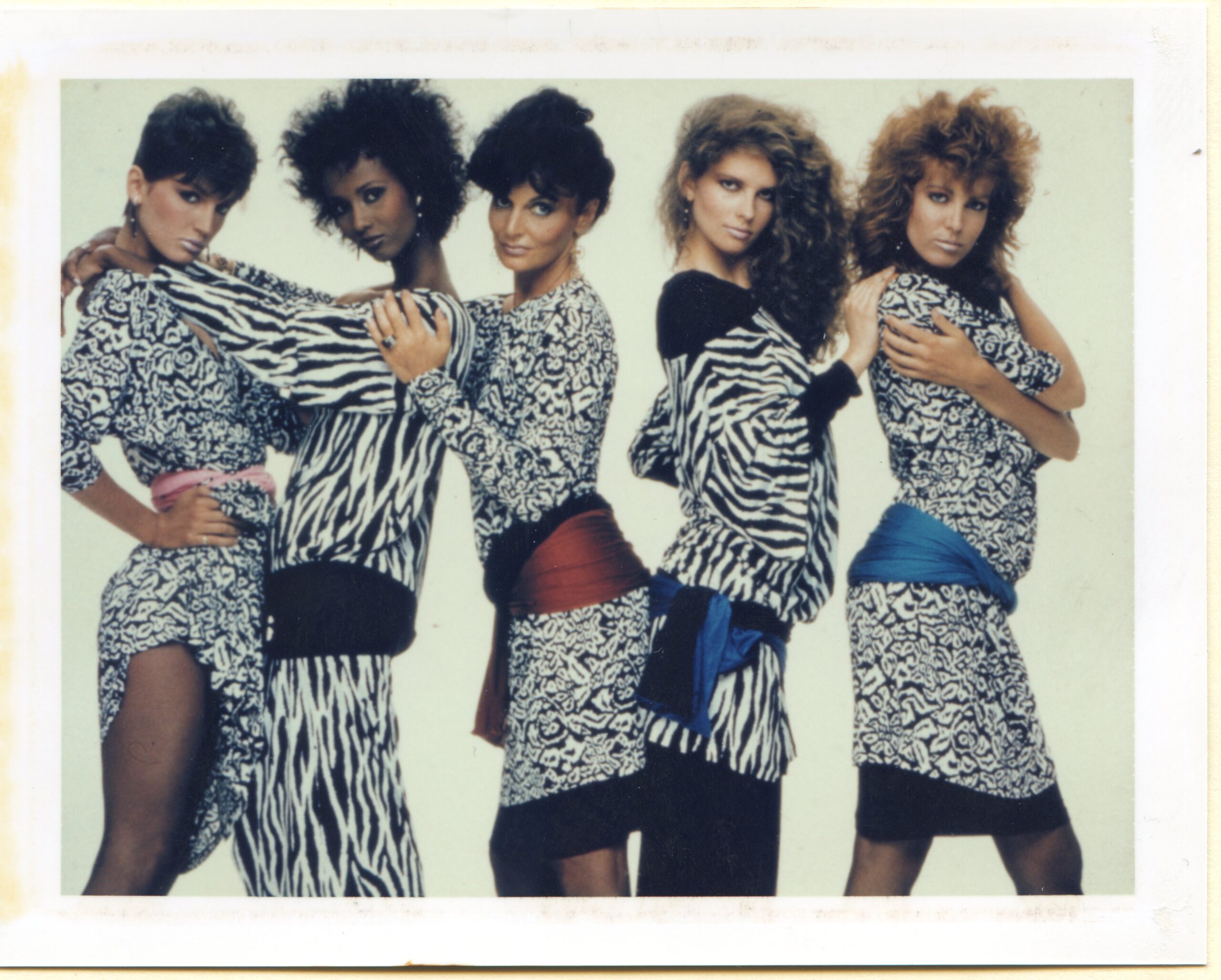
SCARABELLI: I love that. I guess what I wanted to say earlier is that style, for the average woman, has moved so toward athleisure and comfort. In a way, it’s like the ’70s when people first started wearing t-shirts and jersey and your wrap dresses—
FURSTENBERG: For me, it’s always been the woman before fashion. I’m interested in the woman. What makes a woman beautiful is eye contact, smile, and body language. Body language is everything and it starts with fabric. The most important thing is how a fabric feels, how a fabric drapes, and what you can do with fabric in an effortless way. And then of course, you dye the fabric, you print the fabric. And because I started with prints—I mean, I’m very good at that. I’m inspired by nature. My prints move in a very feline way so that they mold to the body. It’s all very flattering and makes women feel good. Because they feel good, they look good, they get complimented. So it just snowballs.
SCARABELLI: Yeah. I feel like now there’s a bit of an issue with a lot of clothes that are made for women to fit into versus being made to fit a woman’s body.
FURSTENBERG: Exactly. I want every woman to feel great and to be in charge. I’m sorry to have the vulgarity, but at most fittings when I don’t like something, I usually say, “Who gets laid in that?”
SCARABELLI: That makes a lot of sense. [Laughs] I was doing some research on your life, and I was thinking about you first as a businesswoman, but also as an artist. The way you lived your life in these different eras, like when you went to Bali or because a part of the literature scene in France. I almost feel like—
FURSTENBERG: I know. Did you know that I brought—oh, shit. What’s the movie? Bret Easton Ellis’ book?
SCARABELLI: American Psycho?
FURSTENBERG: Yes. I brought that to France.
SCARABELLI: Oh, wow. I was just thinking how so much of your work is about you performing as yourself, which maybe was authentic, but you being part of the jet set, going on QVC and things like that—do you consider yourself an artist?
FURSTENBERG: Listen, I I don’t know what I’m doing until I do it. I’m curious. I try to do the best I can. And yes, do I continue to reinvent myself all the time. Yet at the end, if I look back, there is a certain consistency in my inconsistency.
SCARABELLI: It seems like living life is most important to you, above all else, even though you are such a tycoon.
FURSTENBERG: I would say honoring life.
SCARABELLI: That’s beautiful. So just to bring it back to the vintage of it all, I’m curious, is there anything in your closet currently that’s from a long time ago?
FURSTENBERG: I am a uniform person. I love uniforms. Why? Because uniforms are practical, right? They are utilitarian. You see, that’s why I never thought fashion is art. It’s design. It has a function. Art is about emotion. Design is about utilitarianism. So I make uniforms for the woman in charge, because once you have a good shape, you can wear it over and over and over. And that’s the way I am. Right now I’m wearing 15-year-old pants. I mean, now with my vintage, it’s completely timeless. But if I had started in the ’80s, it wouldn’t have worked.
SCARABELLI: Yeah. So you’re still turned off by ’80s tailoring and that oversized look that’s sort of trending again now?
FURSTENBERG: Yeah. Personally, that’s not my thing.
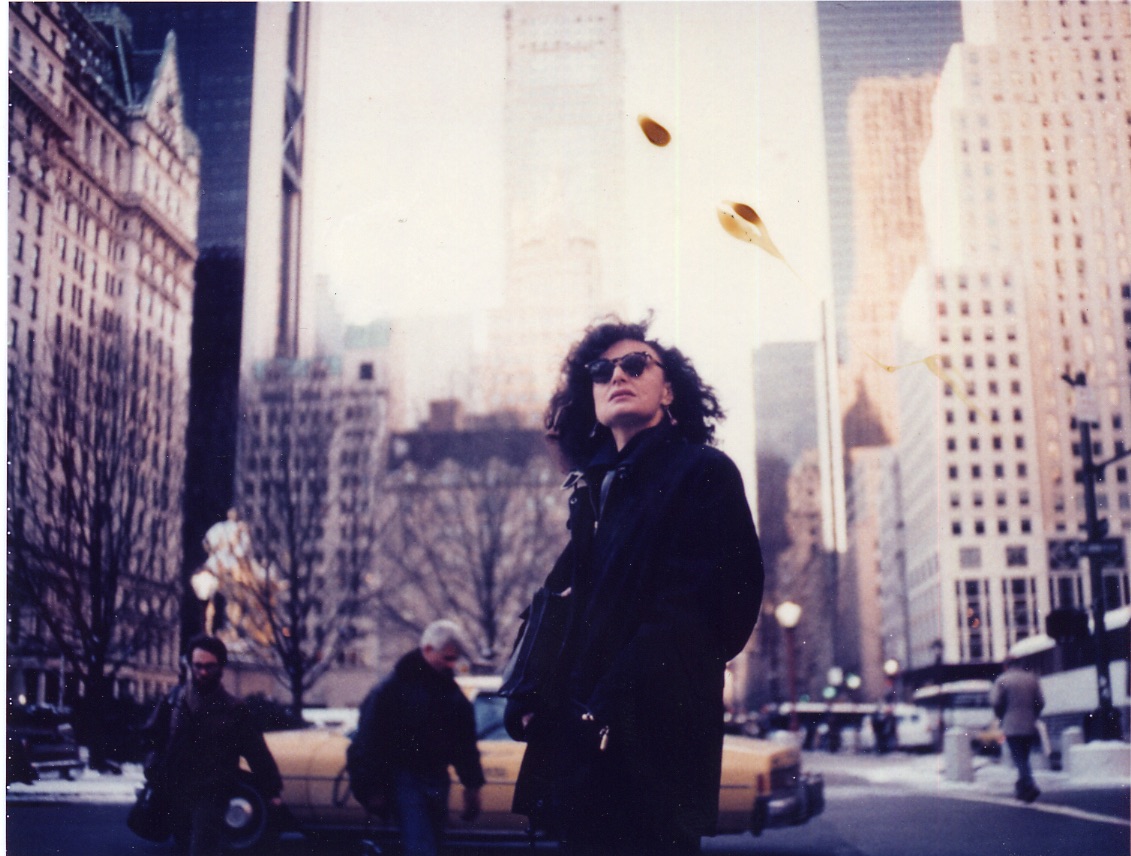
SCARABELLI: Was there anything looking back through your archives during this process that surprised you or—
FURSTENBERG: No. The thing that surprises me and makes me smile is the fascination that young people have for it. It’s flattering and it’s funny and it’s nice because you feel relevant, even though I’m an old woman.
SCARABELLI: And it’s interesting how lasting those garments are, the fabric—
FURSTENBERG: Oh, they last. I mean, you can go and find a dress in a vintage store that’s already been sold twice and it still looks good. But that’s because I pay so much attention to fabrics.
SCARABELLI: And the quality of fabric and production has gone down…
FURSTENBERG: Yeah. Christian Lacroix once told me, he said, men make costumes for women and women design clothes. I said, “What do you mean?” He said, “Well, look at, for example, Jersey, right?” There’s no male designer that loves Jersey because, if you touch it, it doesn’t feel glamorous like satin or something. But he said, whether it’s Madame Grès, or Sonia Rykiel, or Donna Karan, or Norma Kamali or DVF, Jersey is a fabric we use because we wear it and we know how comfortable it is.
SCARABELLI: Amen. Do you have any old bottles of Tatiana in your archive?
FURSTENBERG: I do.
SCARABELLI: I want to smell it.
FURSTENBERG: I have everything. I have the most incredible archive in Connecticut. Not just clothes and prints and textiles, I have a large collection of textiles, but also every painter painted me. Every photographer took pictures of me. I mean, it’s crazy. And you don’t realize it at the time, because you’re just living your life. I go on QVC and Karl Lagerfeld sends me a picture of me in a crystal ball with a television. And at the time it’s worthless, but then years will go by and it becomes part of history.
SCARABELLI: But in a way you were always conscious of the value. You were always saving your stuff?
FURSTENBERG: Yes. I take pictures. I’ve written in my diary all my life. I’m very much a recorder.
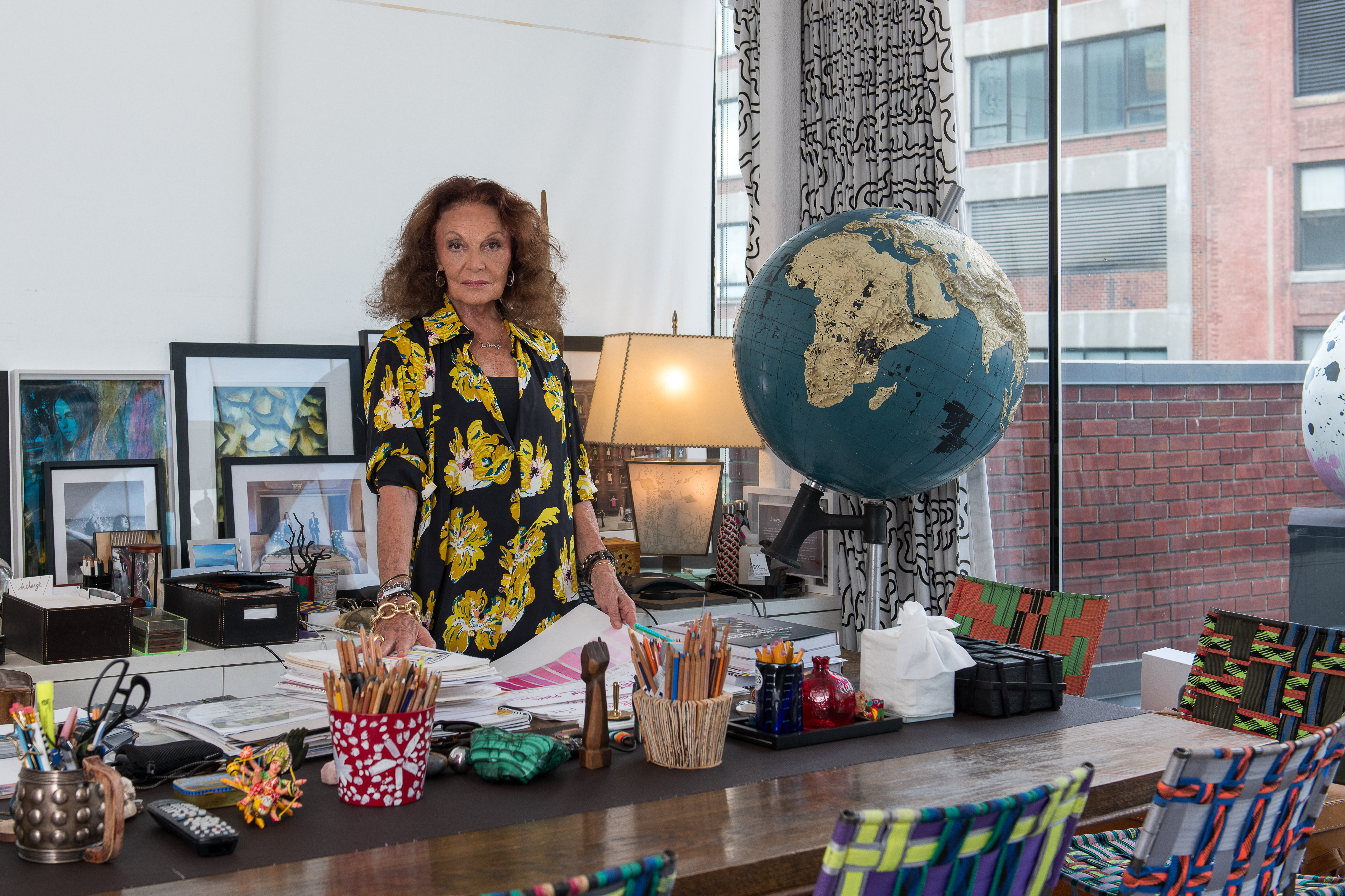
SCARABELLI: Do you know how many pieces you have in your archive, roughly?
FURSTENBERG: 10,000? I don’t know.
SCARABELLI: Wow. And so some of this archive is being sold in the store as well?
FURSTENBERG: Well, yes. I have duplicates and then we bought some. But the other thing I should say is that one of the key moments of my life that turned things around is in 1976 when I did my first cover of Interview. I had one in the ’70s and one in the ’80s. But the first one was pivotal because we did the cover and my hair was straight. And then at the end of the shoot, he said, “Let’s wet your hair.” I said, “Why?” I was terrified that my hair would be curly. And then he said, “But it doesn’t matter. I just want to try something.” And so he took pictures of me as my hair was drying and therefore it was curly. And of course, that’s the cover they chose. From that moment on, I wore my hair curly.
SCARABELLI: Iconic. I actually was looking at that cover yesterday. You look so beautiful. I love it.
FURSTENBERG: I know. Interview meant a lot. The wrap dress and Interview were basically born at the same time.
SCARABELLI: Yeah. Oh but the 1981 cover of you with the crazy headpiece on…
FURSTENBERG: Oh, yes. That’s when I went to Bali.
SCARABELLI: Your Bali era! Oh my gosh.
FURSTENBERG: Yes, I’m dressed as a Balinese.
SCARABELLI: There’s a good quote from you here: “My ultimate ambition is to be a very lucid and outrageous old lady. And for my children just to be healthy mentally and physically.”
FURSTENBERG: Oh, well, that still works.
SCARABELLI: Lucid and outrageous is a beautiful goal.
FURSTENBERG: Today, I would say provocative instead of outrageous.
SCARABELLI: Alright. So what will you be wearing at the launch event on Wednesday?
FURSTENBERG: I have no idea. I never know what I wear until I wear it.
SCARABELLI: Maybe the OG seventies wrap dress with the collar?
FURSTENBERG: It doesn’t really look good on me anymore, I don’t have a waist. But I am the vintage, so it doesn’t matter what I wear. I am the OG.
SCARABELLI: I love it. Well, thank so much for chatting with me.
FURSTENBERG: Alright. Do I get to meet you?
SCARABELLI: Yes, I’ll come by on Wednesday and introduce myself.
FURSTENBERG: I look forward to it.
SCARABELLI: Me too.
